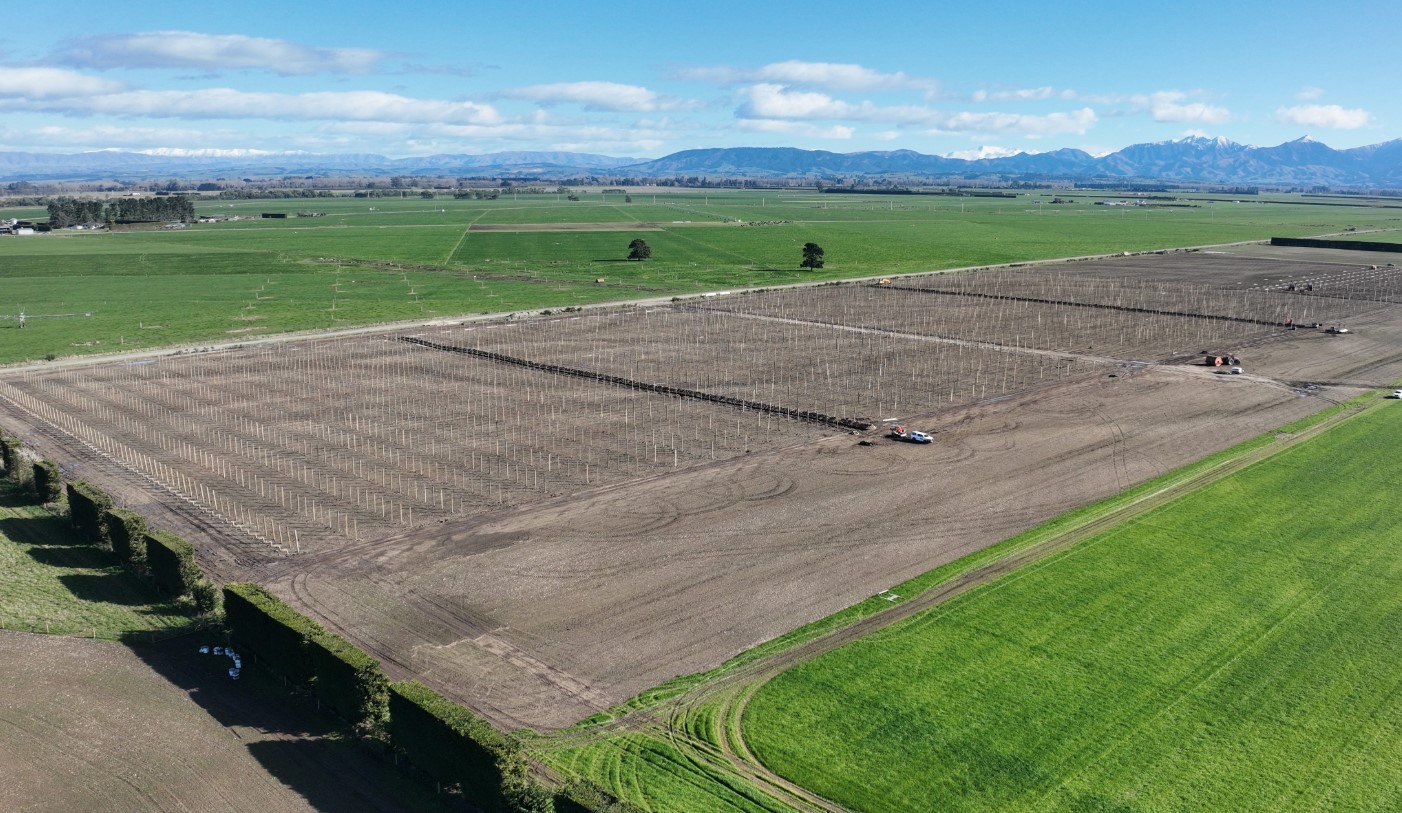
After ten years of development, listed fruit marketing company T&G Global (TGG:NZ) planted its first 27 ha of the new apple variety JOLI in Hawkes Bay in 2023. Market development has been strong with premium interest from Asian consumers especially.
More planting followed. What makes this variety attractive for T&G is that it can be grown nationwide.
The limiting factor for scaling it up quickly is capital.
And that requires committed partners, especially for a crop that can face natural challenges (like the 2023 Hawkes Bay floods). Regional diversification is critical to maintain the supply momentum that will clearly be required.
T&G has now entered into an agreement with the New Zealand Superannuation Fund, through its rural investment manager FarmRight, to grow 125 ha of the product in Canterbury. This will be the first plantings on a commercial scale of these apples in Canterbury.
And to do it, they have purchased land previously used for dairying.
It makes sense to do that because the returns/ha are far better than for dairy faming. It might be a start of a significant land-use transition.
Those better returns come even as dairying it going through a new boom. Dairy exports are rising, up more than +8% in the year to January. The dairy payout is at record levels. And the dairy companies, even Synlait, are all doing very well.
But the future may well be now for a new conversion to horticulture on the Canterbury Plains. You can see the fast rise of horticulture in our export data. In the year to January, fruit exports rose +36%, are now almost double our wine exports and about to push logs out to claim third spot in the export league table.
Canterbury farming has gone through a series of generational changes, from the original sheep, then to beef, and then to dairying. Now horticulture is rising and displacing livestock options. The reason is temperature, reliable water supply, soil types and land suitable for development at scale, making this region a prime candidate. Capital, both local (NZ Super, fund managers buoyed by rising KiwiSaver funds, and private money) will be augmented by foreign inflows. That will be required not only for the orchards planted, but the deep infrastructure required to harvest, process and ship these types of products.
They are chasing the Zespri scale and model of success. T&G Global have a working, viable pathway. But there are and will be others. Zespri has revenues of $4.2 bln. But it can face challenges by being largely supplied out of the Bay of Plenty region. T&G Global has revenues of $820 mln and is seeking to build diversification for its supply across a wider regional spread. In turn, cornerstone shareholder BayWa (a Munich, German company with roots in agriculture) gives the currently loss-making business international resilience as it pushes to global scale.
Every country has climate resilience issues. But they are likely to be less in New Zealand. All the same, T&G/BayWa has indicated that they will license JOLI production in other markets for counter-seasonal supply to key markets. (No doubt they will be well aware of the Chinese IP theft of kiwifruit varieties, and will have learned from that stumble.)
The JOLI variety was developed "in partnership" with CRI Plant & Food Research.
7 Comments
Economics aside, this would be a welcome change as far as I am concerned.
I much prefer spending time in a horticultural area as opposed to a dairy farming area.
Perhaps this will help mitigate the toll that dairy has taken on Canterbury water quality.
N
What are the net returns like for apples on a per hectare basis ?
is there sufficient post orchard gate infrastructure available? Or does that require investment ?
Excellent news
T&G Global is headquartered in NZ.
It is listed on the NZX with a capital value of $196 million and is highly leveraged.
Some 72% of shares are owned by German limited liability company Baywa.
Baywa nominees control the Board of T&G.
T&G Global is essentially a foreign-owned post-harvest and marketing company for fruit and vegetables grown in many countries, not only NZ
T&G shares have risen 15% in price in recent months but are still only one half their price back in 2017. They have made losses for the past two reporting years.
T&G Global holds the master licence for Joli apples developed here in NZ in association with Plant and Food, T&G Global plans to licence the growth of these apples internationally.
The Joli story is indeed one of considerable promise. Joli now sits alongside T&G Global's Envy and JAZZ varieties. However, in the greater scheme of things I do not see this having a major impact on either Canterbury or NZ land use.
KeithW
Thanks Keith.
Apple production in Canterbury has been tried in the past, Applefields being one of the more recent unsuccessful ventures.
My appreciation is that climate factors, particularly frost and hail are more erratic than in other, "traditional" growing areas. But no area is totally immune. The more widespread use of net covering does give some protection from hail at, I expect, quite high capital cost.
Frost may be a bit more challenging, depending on how high the cold to warm air inversion later boundary is above the surface.
As a former Hawke's Bay orchardist, I'll watch with interest.
125ha, one small by Canterbury standards dairy farm.
I have friend's who had involvement with T&G after the Germans bought it. Wasn't pretty so I hope Super NZ know what they're doing.
Still good to see something different being tried.

We welcome your comments below. If you are not already registered, please register to comment.
Remember we welcome robust, respectful and insightful debate. We don't welcome abusive or defamatory comments and will de-register those repeatedly making such comments. Our current comment policy is here.